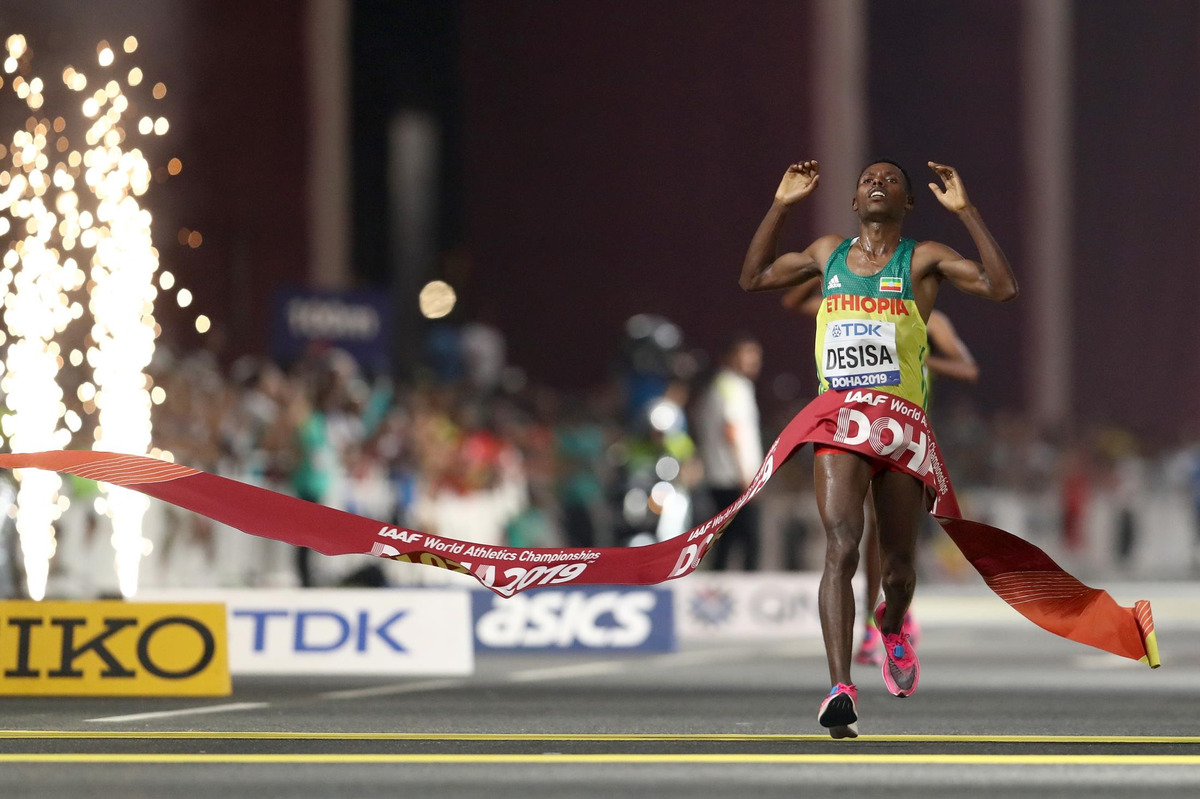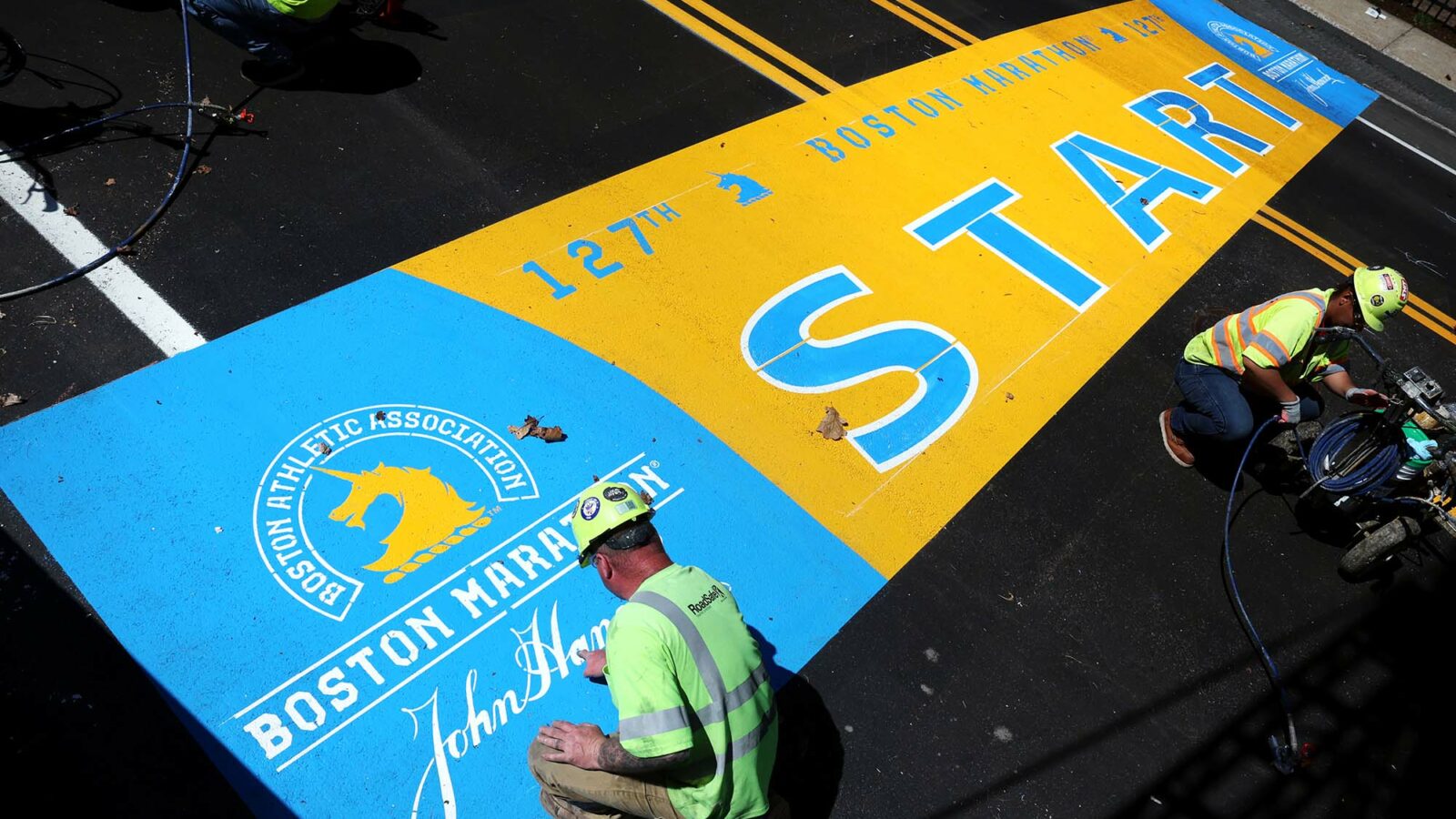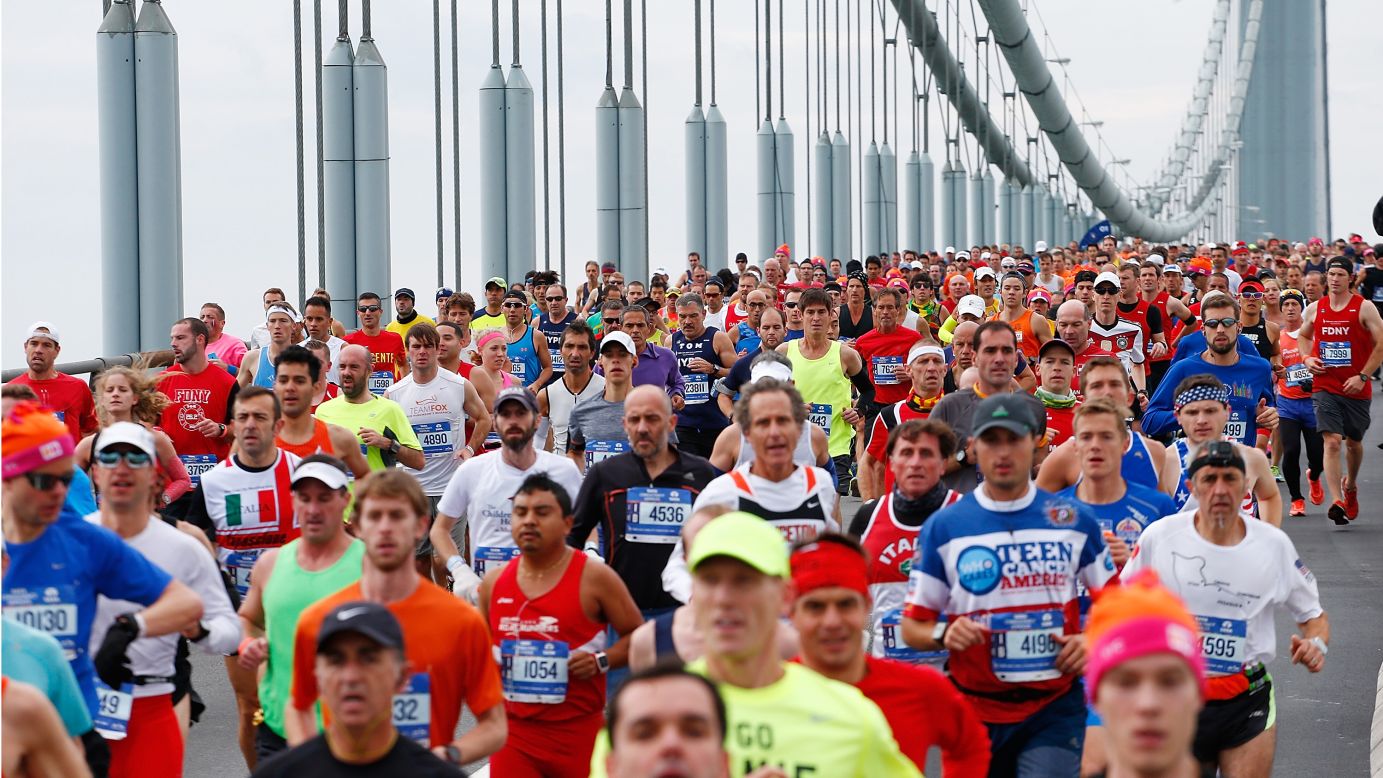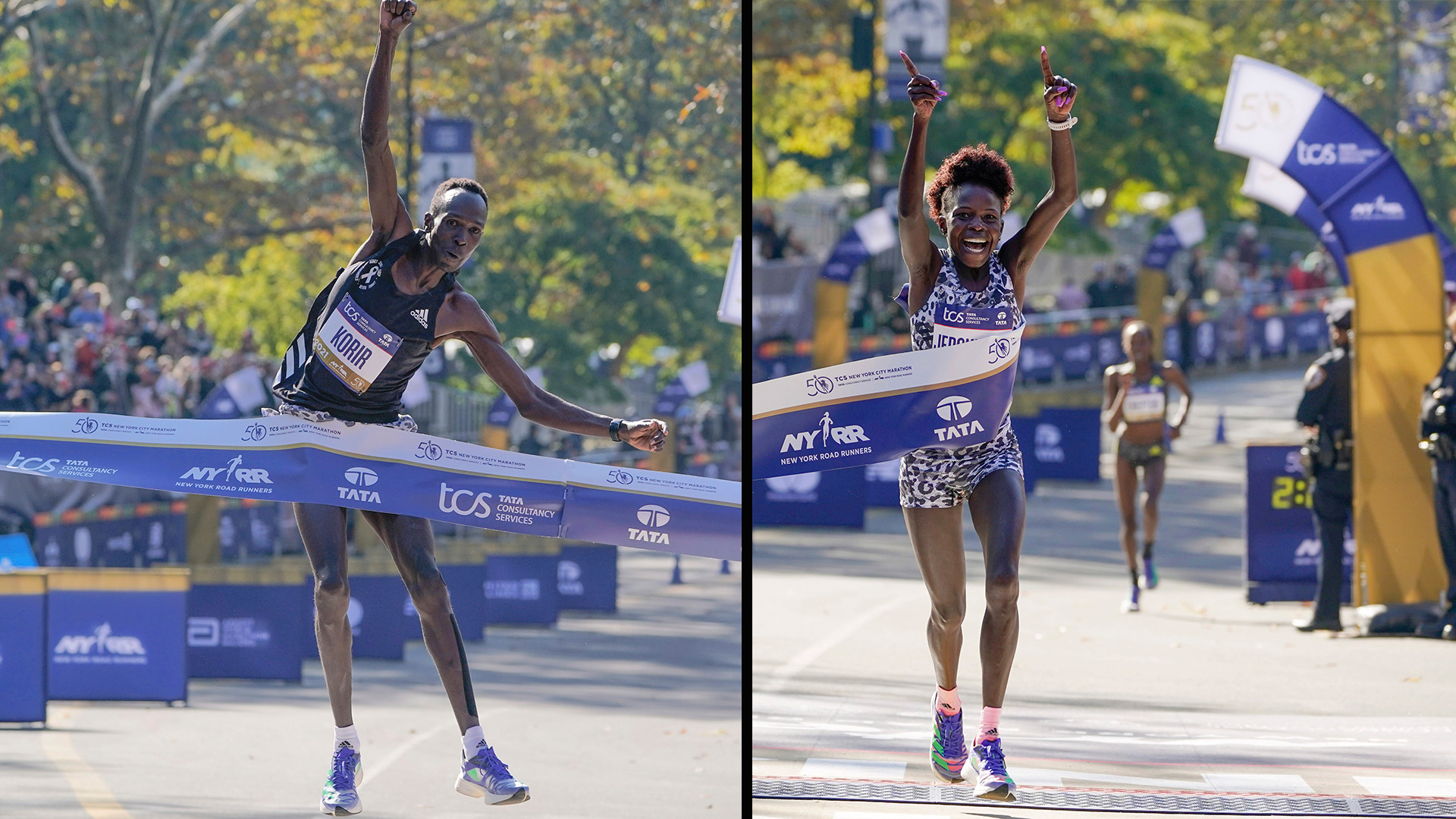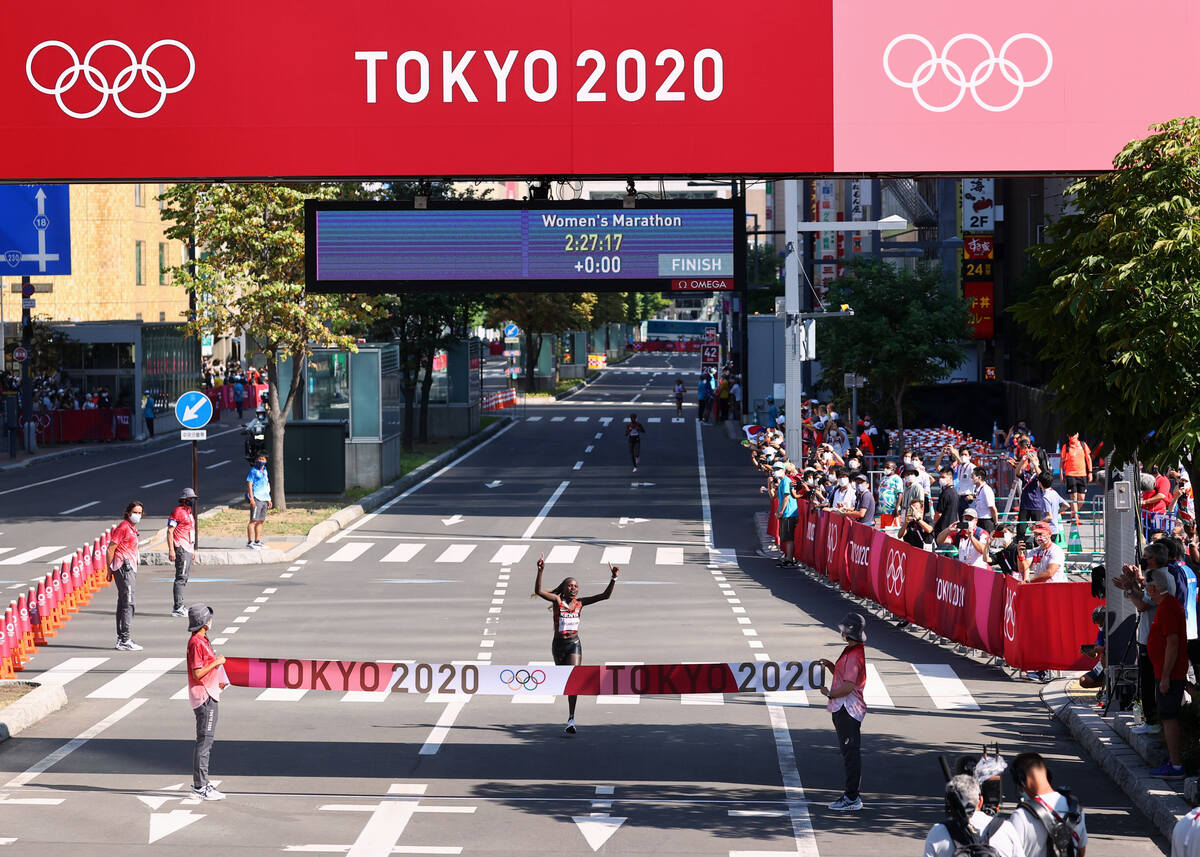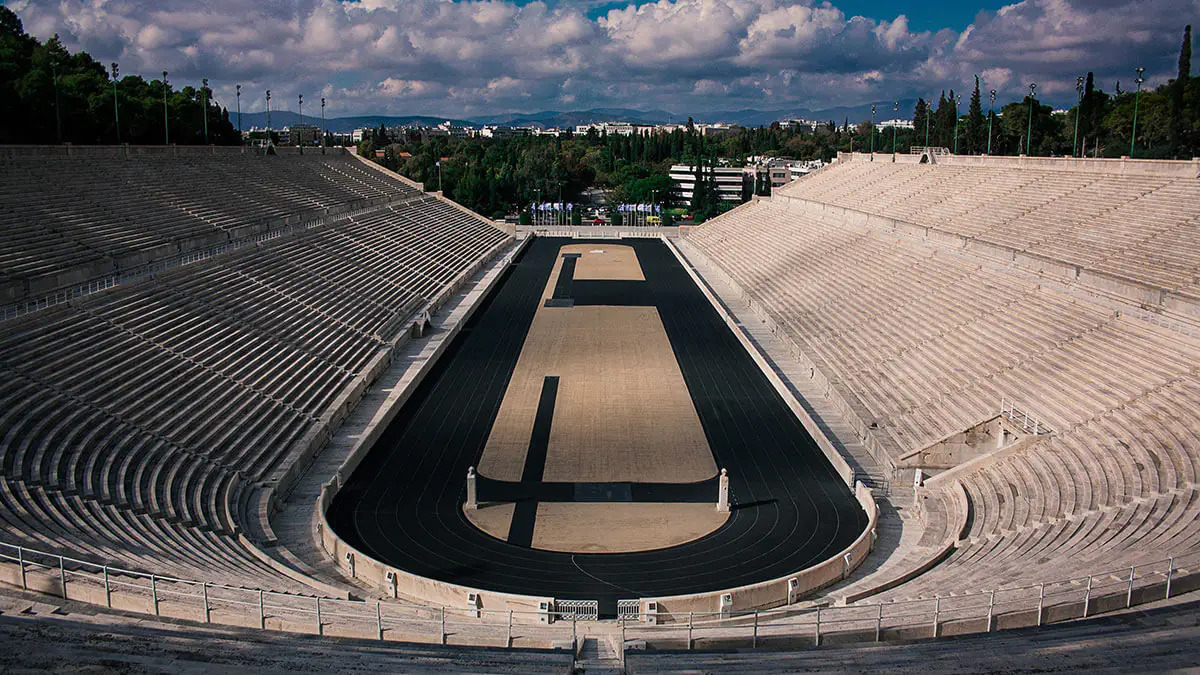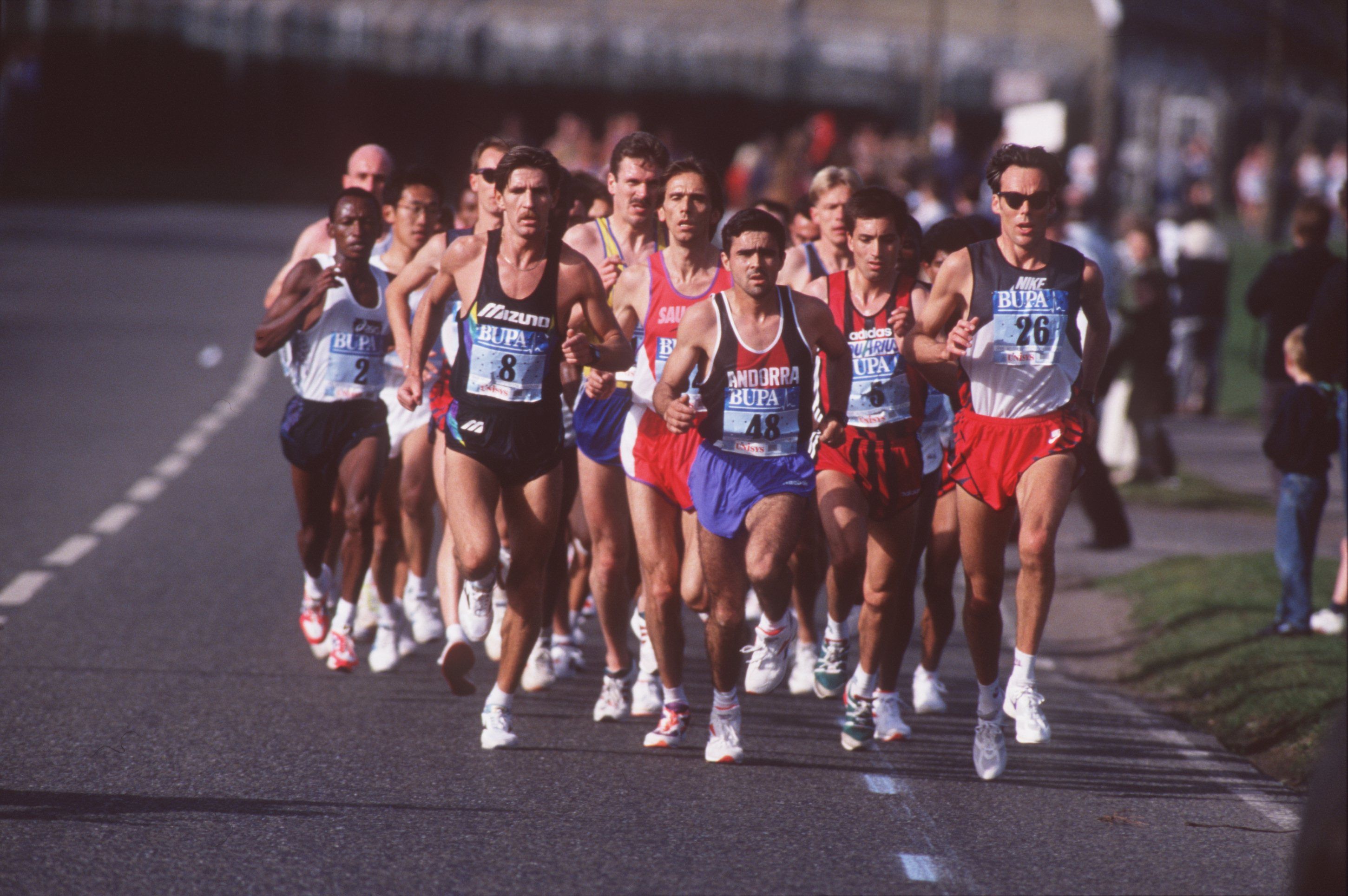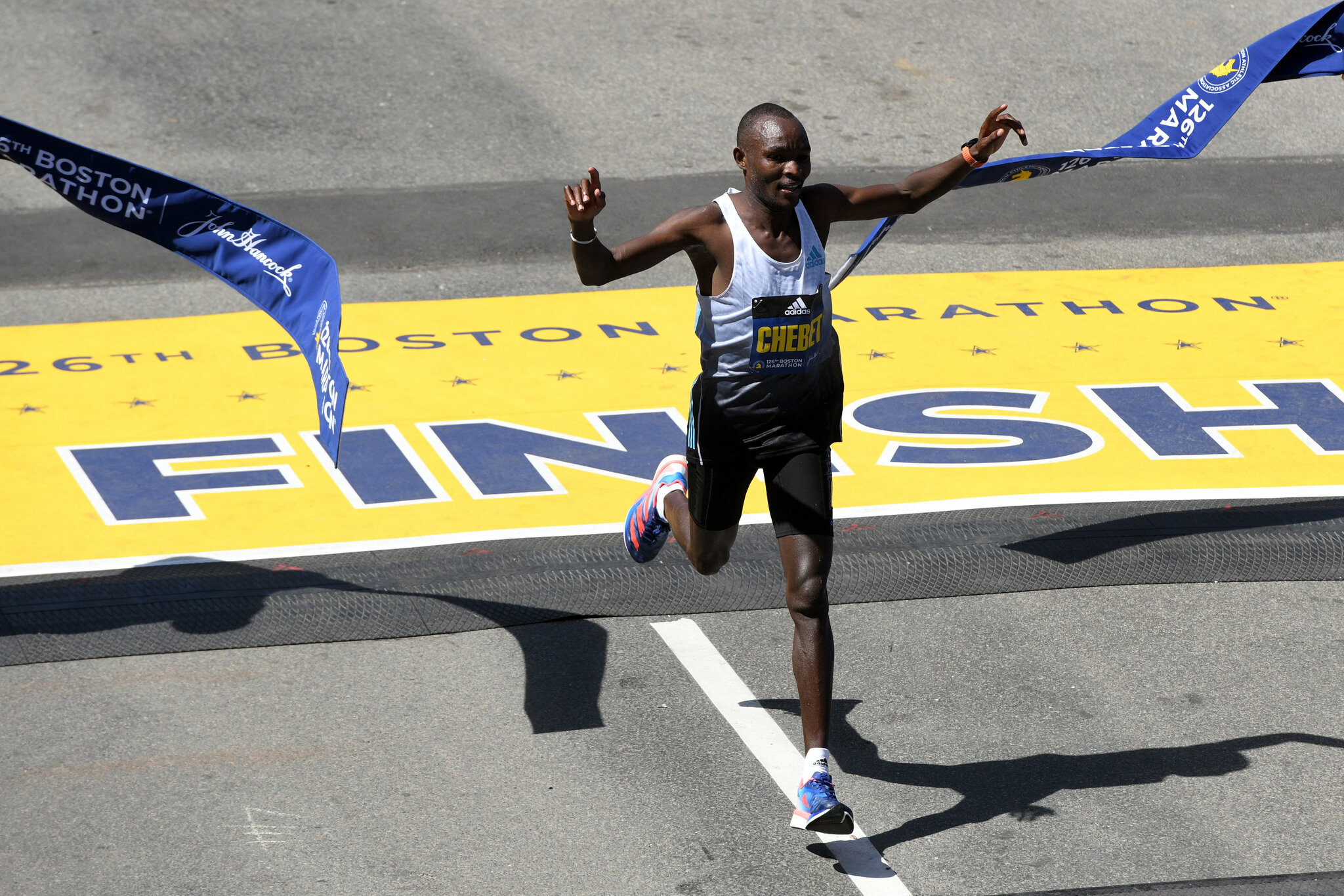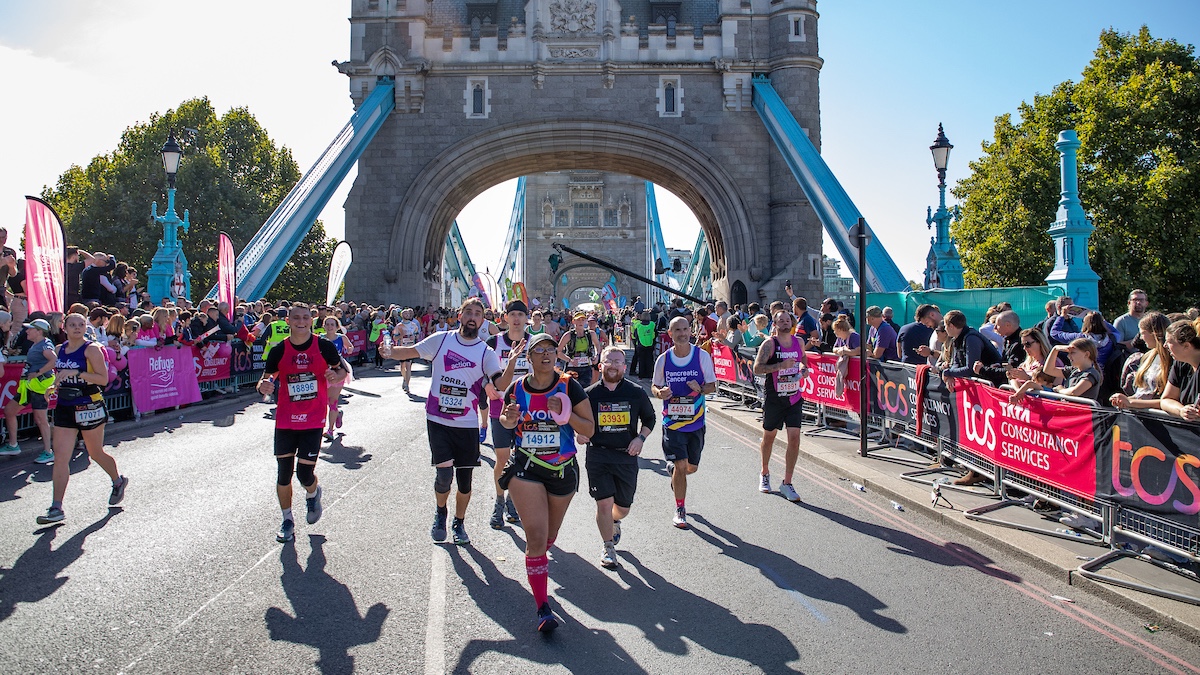

Featured
How Long Is The London Marathon
Modified: January 2, 2024
Learn about the featured London Marathon and discover its distance. Find out how long the iconic race is and prepare for this ultimate running challenge!
Introduction
Welcome to the exciting world of the London Marathon! This iconic event has captured the hearts of runners and spectators alike since its inception in 1981. Known for its scenic route through the heart of London and its incredible atmosphere, the London Marathon is much more than just a race. It has become a symbol of endurance, determination, and community spirit.
Every year, thousands of runners from around the world gather in the bustling streets of the UK’s capital to take on the challenge of completing 26.2 miles (42.195 kilometers). The event attracts both elite athletes and amateur runners, all seeking to conquer the famous course and achieve their personal best.
The London Marathon is not just a test of physical fitness, but also a celebration of human resilience and the power of the human spirit. It is an event that brings people together, transcending barriers of race, age, and background. Whether you’re a first-time marathon runner or a seasoned athlete, the London Marathon offers an experience like no other.
In this article, we will delve into the rich history of the London Marathon, explore the iconic route it follows, learn about the training required to tackle this endurance challenge, and discover some of the famous faces who have crossed the finish line. We will also provide tips for those who wish to spectate and cheer on the runners, as well as share the overall experience of being a part of this incredible event.
So, lace up your running shoes or grab a spot along the route, as we take you on a journey through the exhilarating world of the London Marathon.
History of the London Marathon
The London Marathon has a rich history that dates back to 1981 when it was first organized by athlete Chris Brasher and athlete and journalist John Disley. The event was inspired by the New York City Marathon and aimed to create a similar race experience in the heart of London.
The inaugural London Marathon took place on March 29, 1981, with 6,255 runners crossing the starting line. It was an instant success, attracting both professional athletes and amateur runners from around the world.
From its humble beginnings, the London Marathon has grown to become one of the most prestigious marathons in the world, with over 40,000 participants and millions of spectators lining the streets each year.
One of the reasons for the London Marathon’s popularity is its charitable nature. The event has raised millions of pounds for various charities over the years, making it the largest annual fundraising event in the world.
Throughout its history, the London Marathon has also seen its fair share of memorable moments and achievements. In 1981, the legendary Norwegian runner, Ingrid Kristiansen, set a new world record for women by finishing in 2 hours, 25 minutes, and 41 seconds.
Perhaps one of the most iconic moments in the London Marathon’s history occurred in 2002 when Paula Radcliffe of Great Britain set the women’s world record with a time of 2 hours, 15 minutes, and 25 seconds, a record that still stands to this day.
The London Marathon has also seen its fair share of drama. In 2007, Prince William and Prince Harry took part in the race, much to the delight of the crowds. More recently, in 2018, the marathon saw dramatic scenes when participants battled through extreme heat, with many runners requiring medical attention.
The London Marathon is not just a race; it is an event that brings people together and creates lifelong memories. From the vibrant atmosphere along the route to the inspirational stories of runners overcoming personal challenges, the London Marathon has cemented its place as one of the must-attend events in the global running calendar.
As the years go on, the London Marathon continues to evolve and push the boundaries of what is possible in long-distance running. It remains a shining example of the power of the human spirit and the sheer determination of individuals to conquer great challenges.
The London Marathon Route
The London Marathon route is renowned for its iconic landmarks and stunning scenery, taking runners on a journey through the heart of the city. Participants start at Greenwich Park, making their way past famous landmarks, such as the Cutty Sark, Tower Bridge, and Buckingham Palace, before finishing in front of cheering crowds at The Mall.
The race begins in Greenwich Park, a historic Royal Park that offers picturesque views of the city skyline. From there, runners make their way through the vibrant neighborhoods of Greenwich and Deptford, where local residents come out to support and cheer on the participants.
As the route progresses, runners approach the Cutty Sark, an iconic 19th-century tea clipper ship. This section is always a highlight as runners weave their way through the cheering crowds, with the Cutty Sark providing a stunning backdrop.
One of the most iconic moments of the London Marathon comes when participants reach Tower Bridge. This world-famous landmark serves as a breathtaking backdrop as runners make their way across the River Thames, with the majestic Tower of London on one side and the bustling cityscape on the other.
The route then takes runners along the Embankment, offering stunning views of the River Thames and many of London’s most iconic landmarks, such as the London Eye and Big Ben. The energy along this section is electric, as supporters line the streets, cheering on the participants and creating an atmosphere like no other.
As runners approach the latter stages of the race, they pass by the Houses of Parliament and Westminster Abbey, before making their way to Birdcage Walk, the final stretch before the finish line. Here, the cheering crowds reach a crescendo as runners approach the grand finish at The Mall, with Buckingham Palace providing a regal backdrop.
The London Marathon route is not only visually stunning but also offers a relatively flat course, making it a suitable challenge for runners of all levels. The route showcases the best of London, combining historic landmarks with the vibrant energy of the city.
Over the years, the London Marathon route has witnessed countless extraordinary moments, personal triumphs, and record-breaking performances. It has become synonymous with the spirit of the race, attracting participants from all corners of the globe who come to be a part of this unforgettable experience.
Whether you’re a participant or a spectator, witnessing the London Marathon route is a true delight. It showcases the beauty and diversity of the city, while also providing an opportunity to witness the determination and resilience of the runners as they take on this incredible challenge.
Training for the London Marathon
Preparing for the London Marathon is no easy task. It requires months of dedicated training and commitment to ensure you are physically and mentally prepared for the 26.2-mile challenge. Here are some key points to consider when training for the London Marathon.
First and foremost, it’s essential to create a training plan that suits your fitness level and goals. Whether you’re a beginner or an experienced runner, gradually increasing distance and intensity is crucial to prevent injury and build endurance. Many runners follow a 16 to 20-week training plan that includes a combination of long runs, speed work, cross-training, and rest days.
Long runs play a vital role in marathon training. They gradually increase in distance, simulating the demands of the actual race. It’s recommended to start with shorter distances and gradually build up, aiming to complete at least two to three runs of 18-20 miles before the marathon day. These long runs not only help improve physical stamina but also build mental resilience.
Speed work, such as interval training and tempo runs, should also be incorporated into your training regimen. These sessions help to improve running efficiency, increase overall speed, and enhance aerobic capacity. However, it’s important to balance speed work with rest and recovery to avoid overtraining and reduce the risk of injury.
Additionally, cross-training activities like cycling, swimming, or strength training can complement your running routine. These exercises help to build overall fitness, improve muscle strength and flexibility, and reduce the risk of overuse injuries. It’s important to find a balance between running and cross-training to prevent burnout and maintain overall well-being.
Another key aspect of marathon training is fueling your body properly. Nutrition plays a crucial role in ensuring optimal performance and efficient recovery. It’s important to consume a well-balanced diet that includes complex carbohydrates, lean proteins, healthy fats, and plenty of fruits and vegetables. Hydration is also essential, both during training runs and throughout the day.
Mental preparation is just as important as physical training. The London Marathon can be a challenging and grueling experience, and having a positive mindset is crucial. Setting realistic goals, visualizing success, and developing mental strategies to overcome the inevitable difficulties can help you stay focused and motivated throughout the training process and on race day.
Lastly, it’s essential to listen to your body. Pay attention to any signs of fatigue, pain, or injury. Rest and recovery are just as important as training itself. Adequate sleep, foam rolling, stretching, and regular massages can help in the recovery process and prevent injury.
Training for the London Marathon requires dedication, perseverance, and a well-structured plan. By gradually increasing distance, incorporating speed work and cross-training, properly fueling your body, and maintaining a positive mindset, you can set yourself up for success and cross that finish line with a sense of achievement and pride.
Famous London Marathon Finishers
The London Marathon has attracted numerous famous faces over the years, who have taken on the challenge and crossed the finish line alongside thousands of other runners. Here are a few notable celebrities and athletes who have completed the London Marathon.
Sir Mo Farah, one of Britain’s most celebrated long-distance runners and Olympic champion, has participated in the London Marathon multiple times. Farah made his marathon debut in 2014 and has since achieved impressive finishes, demonstrating his versatility as a world-class athlete.
British singer and songwriter, Ellie Goulding, has also completed the London Marathon, using the event as an opportunity to raise awareness and funds for various charitable causes. Her participation not only showcased her athletic abilities but also highlighted the philanthropic spirit of the marathon.
In 2004, Prince Harry, along with his brother Prince William, laced up their running shoes and took part in the London Marathon. The royal siblings’ participation generated a significant amount of media attention, raising awareness for their charitable endeavors and providing inspiration to countless participants.
Television personalities and presenters have also been a part of the London Marathon. Chris Evans, the British radio and television presenter, completed the marathon in 2016 and 2017, using the opportunity to raise funds for children’s charities.
An iconic moment in the London Marathon’s history came in 2002 when astronaut, Colonel Chris Hadfield, became the first person to complete a marathon in space. Hadfield, aboard the International Space Station, ran the race on a treadmill while orbiting the Earth, showcasing the reach and appeal of the London Marathon beyond the boundaries of our planet.
These are just a few examples of the many famous individuals who have taken on the challenge of the London Marathon. Their participation not only adds a touch of glamour and excitement to the event but also helps raise awareness for various charitable causes, making a positive impact on society.
It’s worth noting that the London Marathon celebrates all its participants, regardless of their fame or status. Each year, thousands of everyday individuals from different walks of life participate in the marathon, sharing their personal stories of triumph, resilience, and fundraising efforts.
The London Marathon is a true testament to the power of unity and determination, showcasing that the thrill of crossing the finish line is not limited to the famous but belongs to all those who embrace the challenge of the marathon.
Spectating at the London Marathon
The London Marathon is not just an event for runners; it’s also an incredible experience for spectators. Whether you’re cheering on a friend or simply enjoying the electric atmosphere, spectating at the London Marathon offers a unique opportunity to be a part of the action.
One of the best ways to spectate at the London Marathon is to find a spot along the route. The route covers various iconic locations in the city, offering spectators a chance to see both the runners and the city’s landmarks. Popular spots include Tower Bridge, where you can witness the runners crossing the iconic bridge amidst a sea of supporters, and Embankment, where you can soak in the breathtaking views of the River Thames while cheering on the participants.
Another great option is to head to one of the designated spectator zones. These areas are strategically placed along the route and offer a range of amenities, including food stalls, seating, and live entertainment. They provide a fantastic atmosphere as spectators come together to cheer on the runners and create a vibrant and supportive environment.
If you’re looking for a more relaxed and picturesque experience, consider watching the marathon in one of London’s many parks. Parks along the route, such as Greenwich Park and St. James’s Park, provide a tranquil setting where you can enjoy a picnic and still catch a glimpse of the runners as they pass by.
It’s important to plan your spectating experience in advance. Research the best spots along the route and check the official London Marathon website for information on road closures, viewing areas, and spectator guidelines. Arrive early to secure a prime viewing spot, and don’t forget to bring snacks, water, and a hat or umbrella, depending on the weather.
Being a spectator at the London Marathon is not just about watching the runners; it’s about being part of a supportive community. Join in the cheers, make encouraging signs, and bring noisemakers to add to the atmosphere. Your energy and enthusiasm will contribute to the overall experience for both runners and fellow spectators.
Lastly, don’t forget to capture the memories. Bring a camera or your smartphone to capture the excitement and joy of the event. Share your photos and experiences on social media using the official London Marathon hashtags to connect with others who are also enjoying the marathon from afar.
Spectating at the London Marathon offers a chance to witness the incredible determination and spirit of the runners, while also becoming a part of the vibrant community that surrounds this iconic event. Whether you choose to cheer from a designated zone, along the route, or in a scenic park, the London Marathon guarantees an unforgettable experience that will leave you inspired and in awe of the human spirit.
The London Marathon Experience
The London Marathon is not just a race; it’s an experience that captivates participants and spectators alike. The event offers a unique blend of challenge, camaraderie, and the electric energy of one of the world’s greatest cities.
For the runners, the London Marathon is a personal journey. Months of dedicated training culminate in a single day where they push themselves to the limits both physically and mentally. The atmosphere along the route is electric, with spectators lining the streets, cheering, and providing an incredible boost of encouragement. The sense of achievement upon crossing the finish line is indescribable, a culmination of hard work, determination, and the unwavering support of fellow runners and spectators.
But the London Marathon is not just about individual achievement; it’s also about community. The event brings together people from all walks of life, united by their love for running and their commitment to charitable causes. Thousands of runners raise funds for various charities, adding a deeper meaning to their journey. The shared experience of training, fundraising, and ultimately participating in the race creates lasting bonds and friendships that go beyond the marathon itself.
For spectators, the London Marathon offers a chance to be a part of something extraordinary. The buzzing atmosphere, the cheers, and the infectious energy of the crowd create an incredible sense of camaraderie and excitement. There’s a palpable connection between the spectators and the runners as spectators cheer on total strangers, offering words of encouragement and support. The joy of witnessing personal triumphs and the determination on the faces of the participants is truly inspiring.
The London Marathon is also a celebration of the city itself. The iconic landmarks, such as Tower Bridge and Buckingham Palace, serve as backdrops to the race, adding a touch of grandeur and history to the experience. Participants and spectators alike get a unique perspective of London, taking in its vibrant streets, diverse neighborhoods, and rich cultural heritage.
But perhaps the most remarkable aspect of the London Marathon experience is the unwavering support from the crowds. Londoners come out in full force, lining the streets and filling the air with cheers, music, and applause. From children offering high-fives to families handing out water and snacks, the spirit of the city shines through. The encouragement from spectators can make a huge difference to runners, providing that extra burst of motivation to push through the challenging moments.
At the heart of the London Marathon experience is the sense of accomplishment, unity, and celebration. Whether you’re a runner or a spectator, the marathon leaves an indelible mark. The memories created, the friendships forged, and the shared joy of crossing the finish line or witnessing triumphs along the way make the London Marathon an experience like no other.
Conclusion
The London Marathon is a remarkable event that goes far beyond a simple race. It represents the triumph of the human spirit, the power of unity, and the celebration of community. With its rich history, iconic route, and incredible atmosphere, the London Marathon draws participants and spectators from around the world, creating an unforgettable experience for all involved.
From its humble beginnings in 1981, the London Marathon has grown to become one of the most prestigious and beloved marathons globally. The event showcases the best of London, taking runners on a journey through the city’s historic landmarks and vibrant neighborhoods. Whether it’s crossing Tower Bridge, passing by Buckingham Palace, or witnessing the cheers of spectators along the streets, the London Marathon route offers a visually stunning backdrop for the participants and an electrifying experience for spectators.
The London Marathon is not just a physical challenge. It requires months of dedicated training, mental preparation, and a supportive community. Runners from all walks of life, including celebrities, athletes, and ordinary individuals, come together to push their limits and achieve their goals. The event’s charitable nature further amplifies its significance, as thousands of participants raise funds for worthy causes, making a positive impact on society.
For spectators, the London Marathon offers a chance to be a part of something truly special. The incredible energy, camaraderie, and the sights and sounds of the event create an unforgettable experience, uniting people from diverse backgrounds in their support for the runners. The London Marathon brings out the best in the city, showcasing the resilience, spirit, and generosity of Londoners.
In conclusion, the London Marathon is more than just a race; it is an extraordinary event that transcends boundaries, inspires, and unites. Whether you’re a runner or a spectator, the London Marathon offers an experience like no other. It celebrates the human spirit, community support, and a passion for pushing boundaries. So, lace up your running shoes or find a spot along the route, and immerse yourself in the incredible world of the London Marathon.
